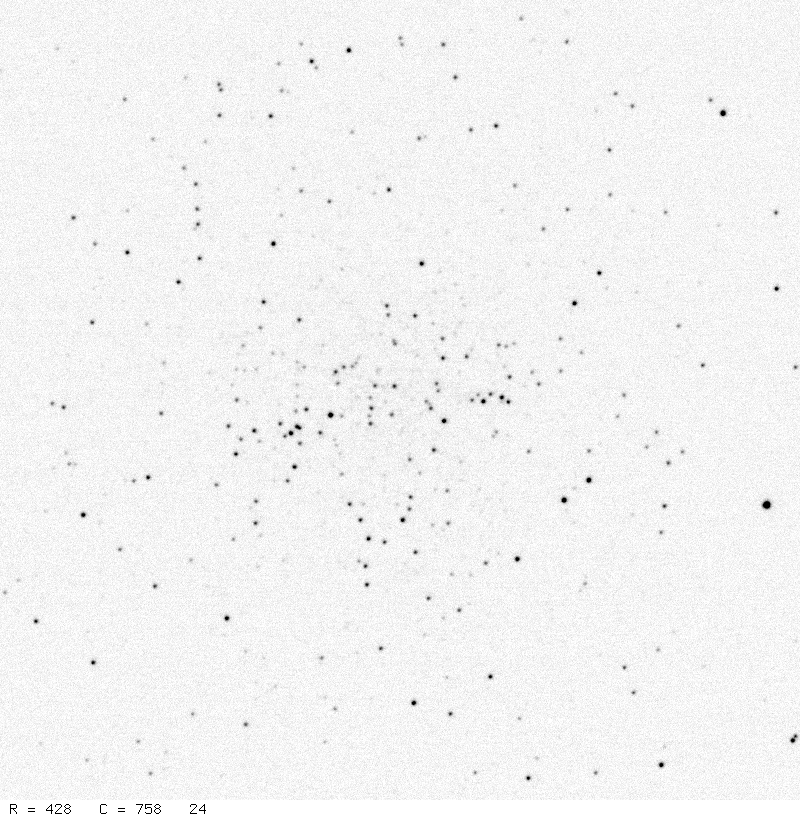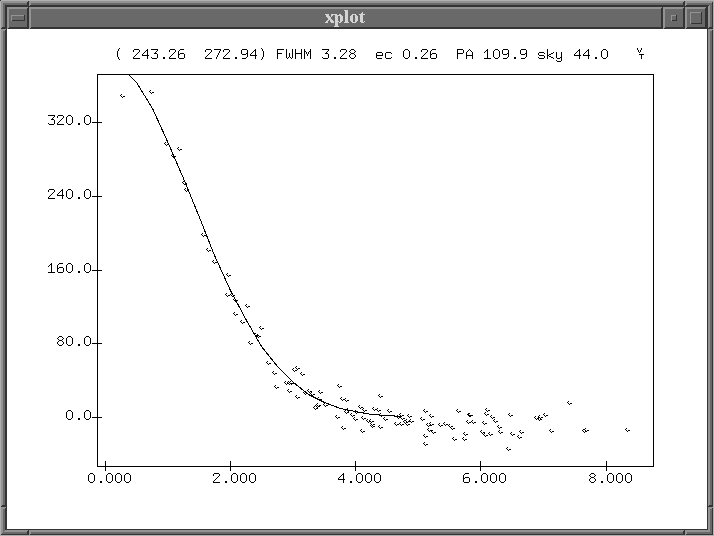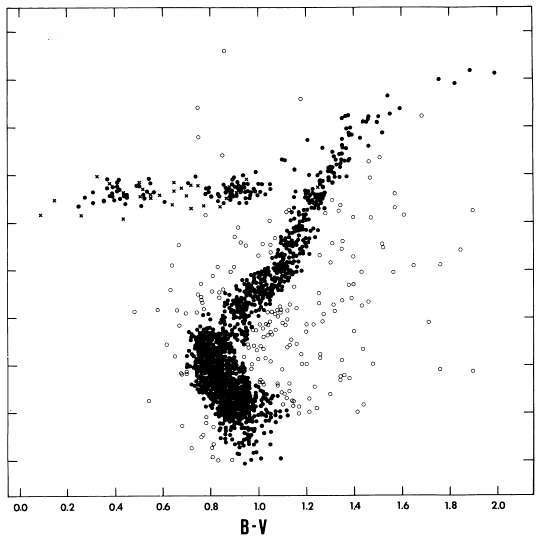
Your goal for today is to measure properties of stars in a pair of images of a stellar cluster. Using your meausurements, plus a few pieces of information I will provide, you must estimate the distance to the cluster.
ssh -Y -l student spiff.rit.edu
When asked for a password, supply the value
I will tell you.
propinit
cd $dd
ls
You should now be in the directory with the images you'll need. The two images you'll use are
cluster_a_b.fit a B-band (blue) image of the cluster
cluster_a_v.fit a V-band (green) image of the cluster
You can display one of the image by using the tv command, like so:
tv cluster_a_b.fit
A new window should pop up like this:

If you move your cursor into the image, you should see the coordinates (bottom of the window) change as you move the cursor. If the coordinates DON'T change, then click on the window's bar at the top. If they STILL don't change, left-click once while pointing anywhere in the image.
There are three keys you can use to measure stellar properties.
( 499.69 563.62) flux 9108.6 npix 49.5 mag 15.101 sky 32.0 [ 4.0 8 15]The number after "mag" will give you the instrumental magnitude of the star in this image.

To destroy an image window, you can right-click while the cursor is inside it, or use the Mac red-color-button at the top left of the window.
The star marked "A" in the picture below has apparent magnitudes
m(B) = 11.25
m(V) = 10.39
m(R) = 9.85
If you find the difference
delta = (instrumental mag) - (apparent mag)
for this star, you can use it to convert instrumental
magnitudes for ALL stars in the image.
You should measure the magnitudes of 25-100 stars in the image. Perhaps you could cooperate with other students and combine your results ...
The goal is to make a color-magnitude diagram, in which you put
It might look something like this:

Once you have a good color-magnitude diagram for the cluster, you can use the location of some feature to help find the distance.
Ask the instructors for details.